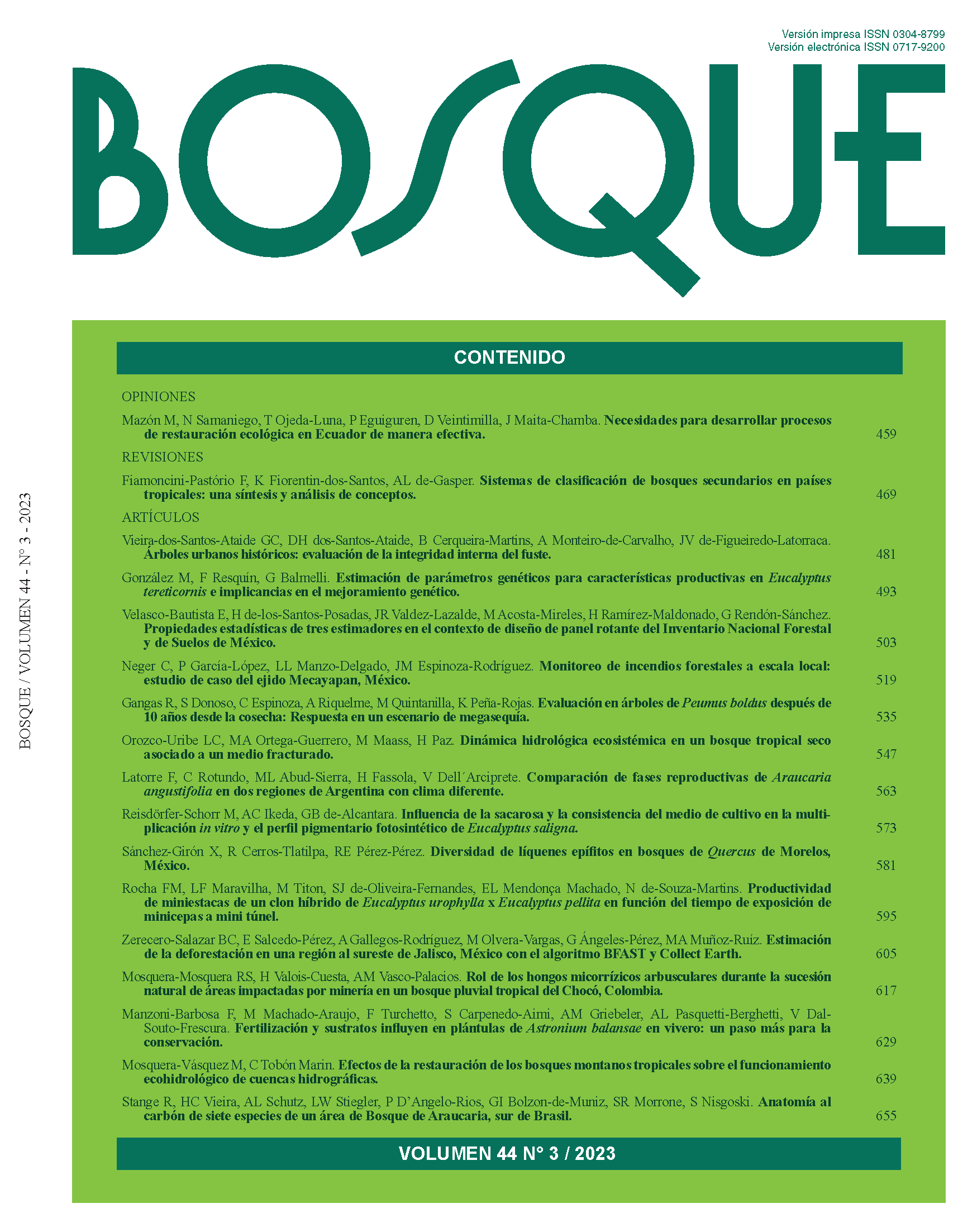Anatomía al carbón de siete especies de un área de Bosque de Araucaria, sur de Brasil
Contenido principal del artículo
Resumen
To support the identification of species and control illegal charcoal production, this study aimed to anatomically characterize the carbonized wood of species native to the Araucaria forest areas, including Nectandra megapotamica, Ocotea indecora, Ocotea diospyrifolia, Ocotea puberula, Balfourodendron riedelianum, Chrysophyllum marginatum and Zanthoxylum rhoifolium. The samples were collected in the Planalto Catarinense region (high plains of the state of Santa Catarina). Three disks were removed from three trees of each species, selected randomly. All discs were sectioned to obtain samples close to the different parts of the trunk (near bark, intermediate and near pith). These sample were then carbonized for 392 minutes in a muffle furnace using a ramp regime with a maximum temperature of 450 ºC. Following carbonization, there was no significant degradation of the anatomical structure and cell arrangement, enabling the characterization and identification of species through comparison with wood description references. The position of samples in the trunk did not influence the anatomical characteristics, facilitating species identification. Wood from the Lauraceae family exhibited greater vessel diameter and lower vessel frequency compared to samples from the Rutaceae and Sapotaceae families. Discrimination of Chrysophyllum marginatum from the other evaluated species was possible based on vessel grouping, ray width and ray frequency. The results obtained contribute to a charcoal database of Atlantic Forest species, providing valuable information for practical applications in forestry supervision.

